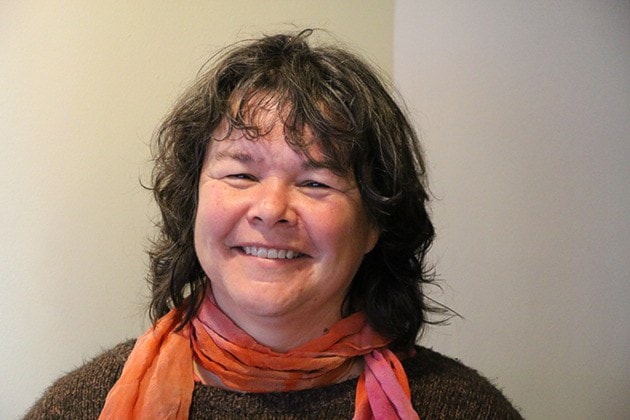“We need to change they way we deal with our dead,” says Carmen Ditzler. “And we need to deal with our fear of dying. And with the business of death itself.” Then she laughs. “How’s that for an introduction?”
Ditzler has recently been juried into a national exhibition known as Felt::Feutre for a death shroud she made entirely of felt. Held every two years, the Canadian felt symposium brings together felt artists from Canada, the United States and Europe to promote and offer classes in the textile arts.
Before discussing the process of creating her felted art pieces, Ditzler expands on why she chose to create death shrouds – a unique piece of art that also becomes a method of natural burial and a catalyst for discussing death itself.
“Most human beings, especially those in developed countries, add to their carbon footprint when they die with all sorts of harmful things like embalming fluid, concrete vaults, treated wood coffins, or enormous amounts of natural gas when cremated. There aren’t enough resources for the long-term to have all of us buried or cremated. But natural burial – or green burial -- is starting to catch on. With natural burials, our bodies are allowed to totally decompose and return to the earth.”
Ditzler is interested in helping cut down on human impact by creating art that can also help celebrate death rather than perpetuate fear. “I talk to so many people who are afraid of dying,” says Ditzler, “but I hope that these death shrouds allow for discussions about death. My hope is that those interested see it as art that they appreciate during their lifetime, and then it becomes a part of them when they are laid to rest. It’s about dying well, and not just pretending it’s not going to happen.”
The ideas surrounding natural burial are not new. Renowned author Margaret Atwood has recently discussed her interest in natural burials; Denman Island recently created the Denman Island Natural Burial Cemetery, the first exclusively green cemetery in Canada; and the Urban Death Project in Seattle is developing what they call ‘recomposition’, a compost-based renewal system in which bodies decompose fully, leaving a rich compost.
“It takes a shift in thinking,” says Ditzler. “It wasn’t that long ago that cremation in the Western world was largely unheard of. This is just the next stage in dealing with our dead.”
Ditzler, mother of two teenagers, owner of Bad Duck Caramel, and the mastermind behind this year’s Kootenay Fiber Fest, has been inspired by the natural world for a long time. “I’ve always been inspired by natural textures, the natural cycle of things, and how nature regenerates and makes room for the new.”
After several classes in felting, and a growing interest in how art can be created from easily attainable material, Ditzler began her path towards large felted pieces that mimic nature.
After receiving a grant from the Columbia Basin Trust, Ditzler photographed textures in nature, and then mimicked what she had photographed in felt. “I wanted to create the bark from a black poplar, or cottonwood, tree. The trees have a thick craggy bark, and when the bark falls off, what’s left is shiny and grey. So I took pictures down by the Creston Valley Wildlife Management Area. I found trees where half the bark was still on, and half was not. I also found insect tracks, fungus and mushrooms. It was wonderful. That became the inspiration for the death shroud.”
Ditzler will journey to the symposium later in September to not only show her work, but also continue to learn, take classes and share. In the meantime, she continues to mimic nature in felt. “It’s amazing how wool and soap and water can make really strong fabric, and this fabric can be changed into all sorts of sculptures. I also like that you are never really in control; there will always be an element of surprise. I like that. I like that I can take a humble material and make it into something extraordinary.”
For Ditzler, art should be a tactile experience. “I want people to interact with my art – to use a felted seed pod as a place to hold jewelry or even car keys. I want them to be a part of someone’s life, rather than just hanging on the wall like a painting. If people touch my art, then I’m happy.”
Ditzler’s felted pieces can be viewed on her website www.carmenditzler.com.
